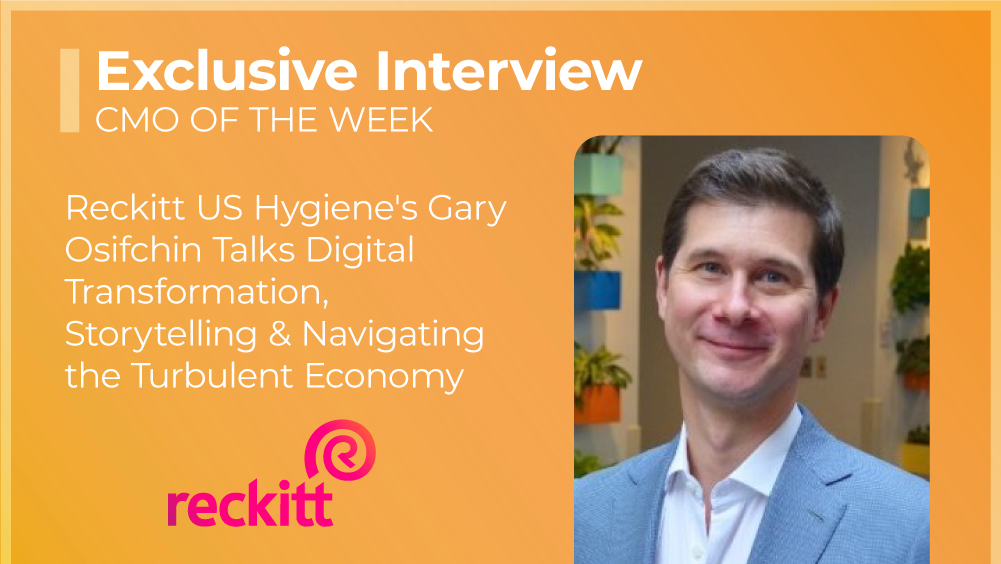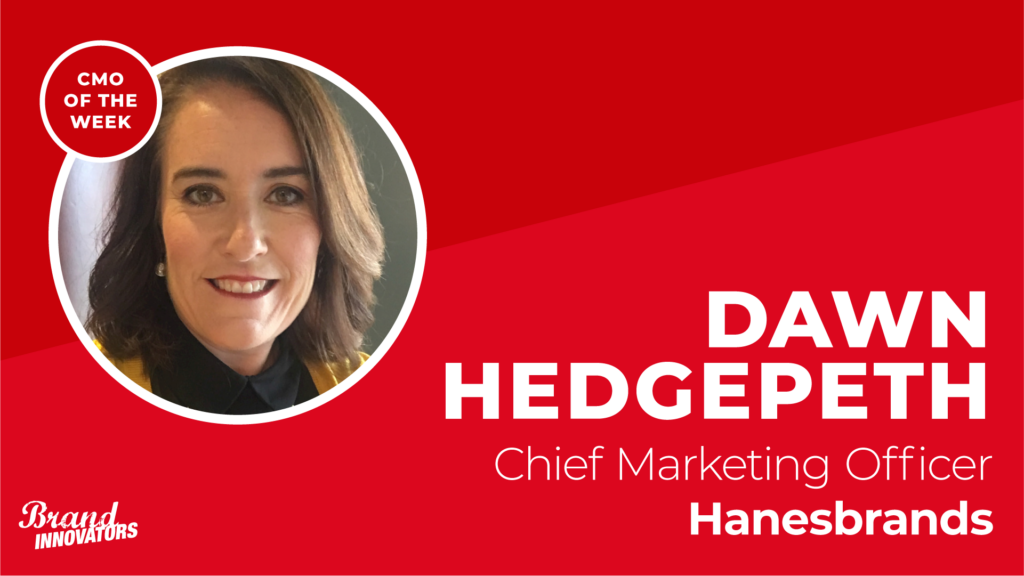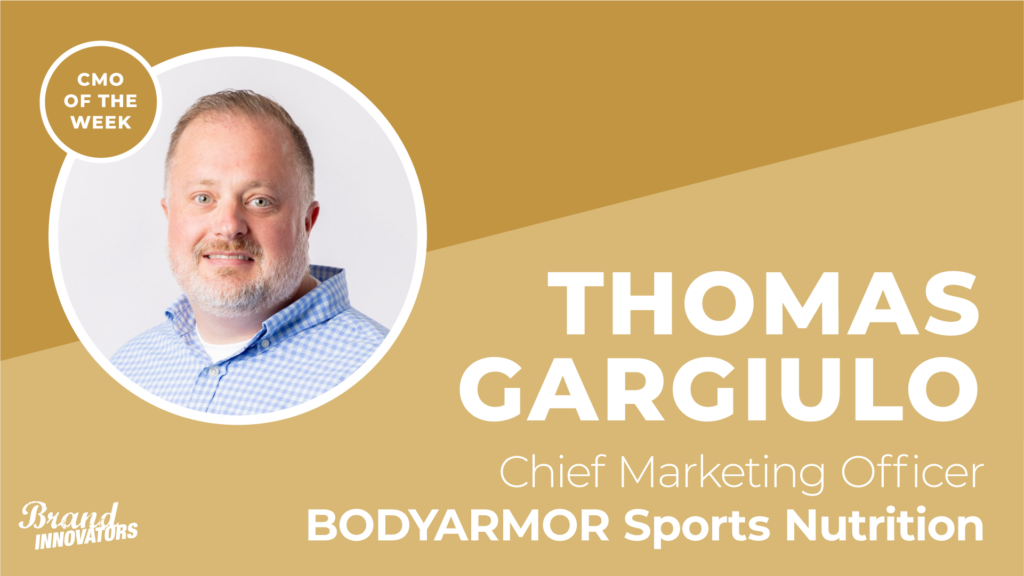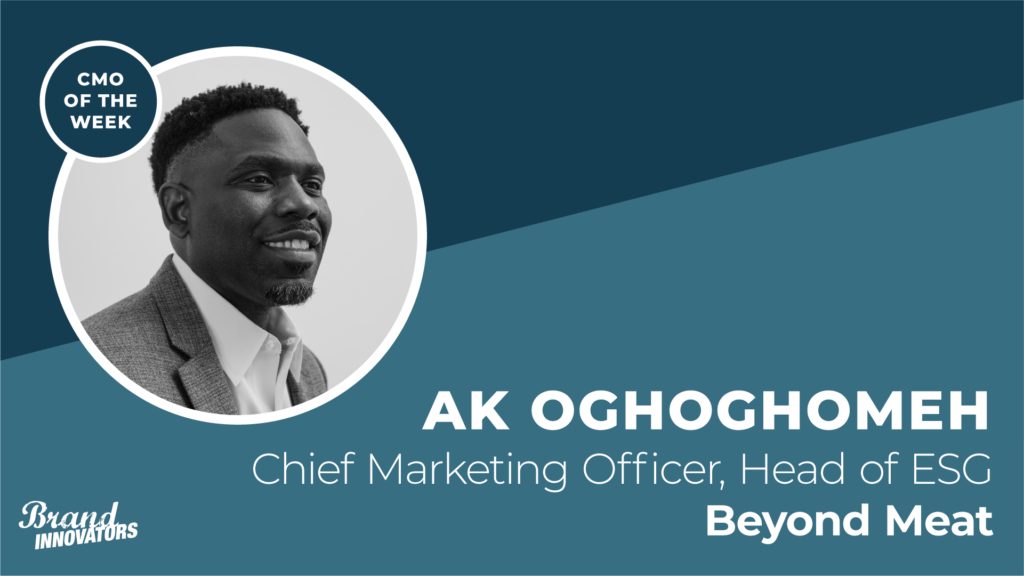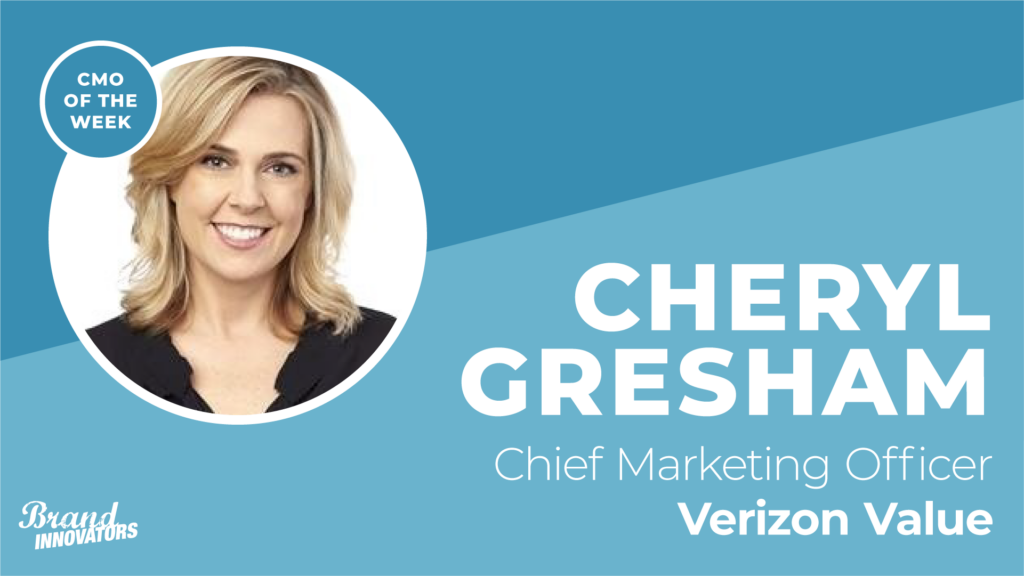When Gary Osifchin joined Reckitt from Ferrara Candy in 2021, he says he “left the job of making the world sweeter to make the world a bit cleaner.”
As CMO and general manager of Reckitt’s US Hygiene division, Osifchin is responsible for a range of cleaning products. He some of the most well-known household brands including Lysol (America’s No. 2 most trusted brand, according to Morning Consult), dishwasher challenger brand Finish, Air Wick and its Essential Mist line, as well as home cleaning products Resolve Carpet Cleaner, Woolite and septic cleaner brand Red X.
Since he took the helm, Osifchin has been on a mission to lead digital transformation by leveraging the strength of each brand to maintain its COVID growth, while also focusing on improving its diversity efforts. “It is about rebuilding off the tremendous growth that our categories and our brands saw during COVID,” says Osifchin. “More people were at home. There were more odors and sickness in the home. Lysol really played a role. So how can we leverage that meaningfulness of Lysol in new ways around disinfection and Air Wick to continue to offer freshening and fragrance into the home?”
The Woolite brand has been about care and protection for clothes for decades. Today, Osifchin says it is about “really reinventing that for a new generation with modern clothes that are of a different quality but still needed to be maintained to be loved and enjoyed.”
Osifchin has also held senior marketing roles at Ferrera Candy, Mondelez International, Kraft Foods Group, Time Inc. and SC Johnson. He says when he chooses a role it is not just about the next promotion, but what he can learn. His advice to others: “Think about what you’re going to gain,” he explains. “Think about what you’re going to give from your experience in that role. That’s why somebody wants you because you’re going to do something different than what’s been done before. You’re going to bring about change or add something. And then what are you going to get in return? What are you adding in for yourself?”
Brand Innovators caught up with Osifchin from his office in New Jersey to talk about digital transformation, storytelling and navigating the turbulent economy. This interview has been edited for length and clarity.
What are your 2023 goals as CMO?
My goals remain very much similar to 2022, which is to drive digital transformation and move the organization forward to be relevant in places where it matters. From an investment strategy, ensuring that we are seeing a return on our media and marketing investment and moving channels in a digital transformation way. The historical legacy of linear television has a great return on investment, but that’s not where eyeballs are anymore. I will continue to make more aggressive moves in the digital space and push us forward in terms of our media investment strategies in 2023 and 2024.
The second big thrust coming out of COVID is leveraging our strengths to really ensure brand growth continues. That’s a range of innovation, renovation and product communication. And then really leveraging the last five year investment strategy that the team had made moving into multicultural targeted media and really upskilling even further in terms of our understanding and empathy for different audiences, whether it’s Black Americans, Hispanic Americans or Asian Americans. By understanding them more, we know where the growth can come from and where we can also lose growth. The Air Care category, for instance, is over indexed amongst Hispanics. We can quickly lose that category to a competitor, unless we better understand the why behind why they’re buying us and then use that to inform comms.
How are you thinking about digital transformation?
It comes down to, are we meaningfully connecting with a person in the world when it matters? That’s pretty straightforward. The internal structures need to allow and enable you to do that. Your marketing tech ecosystem, your relationship with the rise of retail media, with retailers and how you look at that investment strategy, the downturn in eyeballs, penetration and cord cutting from linear and what that means. I look at it from a standpoint of what the outcome is that I want, which is to get the best return on my investment, and then build the brands’ equity and drive near term sales.
That’s what we do as marketers is connect the dots across the funnel. I have a lot of focus on that in terms of upfront planning and strategy of the comms process to ensure that disparate folks with different objectives internally are indeed marching in the same direction. We’re all working towards the common objective of driving that output and the ROI and brand health. Then the ad tech and the support that we have internally to ensure that we can do that from a data and technology standpoint. And then ensuring the right content for the right moment.
Are your media dollars going much more into digital and into television than in the past?
I have moved us to a majority digital, north of 60% this year digital spend and really significantly cut down linear. Under 30 doesn’t even watch linear, the cord cutting is all real. The rise of streaming is real. The Big Five streaming services are real. We need to be where the eyeballs are and deliver the ROI. It’s very easy as a marketer to look at the historical marketing mix as our guide. They told you at that point in time, your ROI was X in this channel with this asset, right? Well, that’s great, but that was at that time. Now you have to look strategically at what has changed. The media landscape is so dynamic right now and the need to stay more current and closer in to really understand your results, is the approach I’m taking.
Can you talk about who you are targeting across your various brands?
It depends on the brand. For Woolite, it is about bringing in millennials to take care of the clothes you care about –your Lululemon yoga outfit, your favorite sweater that you wore through COVID and you really love and you still wear. It’s more real storytelling in our comms plan that’s really about protecting the clothes you love, so that you can continue to love them. For Air Wick, we are on TikTok and really connecting with a younger generation, who are often experiencing life transitions such as moving out of college to your first home wanting to ensure that you’re setting the fragrance in the way you want it. It’s a more contemporary way of delivering fragrance.
For Finish, there’s an insight for a younger Hispanic female consumer that they learn from their mom, that doing dishes by hand is the best way to do dishes. The thinking is that the dishes don’t actually get done in the dishwasher. That’s just not true. Using the dishwasher, whether on a small or big load, you save money because you save energy, water and time, which you can enjoy with your family. The comms is a situation with a mom, a son and the grandmother who has made enchiladas. The message is we’re going to enjoy this delicious meal that you made and we’re not going to worry about the dishes. We’re going to let the dishwasher with Finish Quantum do its job. It’s about behavior change.
Can you talk about how your experience at other companies like Mondelez and Ferreira, have helped shape your approach to your current role?
My approach to my career has been to add things to my toolkit along the way – experiences, different cultures, different structures, different challenges at very different brands. I started an SC Johnson on Glade, Ziplock and Pledge. Now they are my competitors. After six years, I worked at People magazine and did shopper marketing back when everybody bought magazines at checkout. I was running the retail side of the business and that was very additive for me getting very close to the retail customer and then also understanding the inner workings of a media company and how we created value for advertisers beyond the ad.
Then I had a long stint in food marketing at Cadbury first owned by Kraft, then bought by Mondelez. I was fortunate to really get in early in digital back in 2008 on Stride gum and Dentyne and really got in on YouTube and Facebook and back when it was all about likes and eyeballs. That early digital content experience has served me well. When I moved into global roles at Mondelez and running global brands, like Oreo, Cadbury and Milka, it was so much more about the hard work of branding strategies, innovation and brand architecture. I learned it is about spending the time getting it right and then influencing people to get behind it. Now I’m in a global company running marketing on big US businesses and brands. It’s about connecting, agreeing, aligning and influencing each other. Are we going in the same direction as global partners?
What are your predictions for brands in 2023?
We are still in for a lot of turbulence. The economy is on everybody’s minds. Consumers are going to make trade offs in terms of where they’re spending their money. They’re not going to buy things that don’t work. It’s a harder job this year, coming out of this COVID era, and especially coming out of the time when people had money. Now brand relevancy and what you’re really doing for the consumer is really important because they’re going to make some tough trade offs. They are going to make choices. There’s also the tension of the choices of your everyday products and brands for your home and your life versus experience. People want to travel more but they want to buy a new car. There’s bigger picture stuff that even in the world of tension economically, people still want to go out in the world. That is something that we’re going to be focused on.
